Cedarvale Ravine House by Drew Mandel Architects
This house in Toronto by Drew Mandel Architects features pale grey stone walls and an overhanging top storey (+ slideshow).
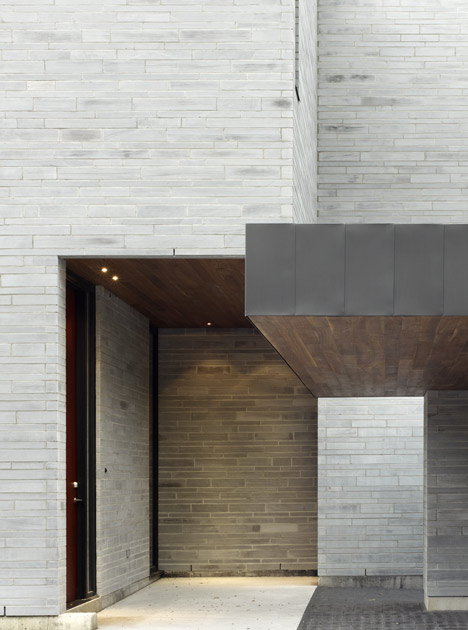
Home to a family of four, the two-storey residence sits at the edge of Cedarvale Park, a steeply sloping ravine surrounded by woodland.
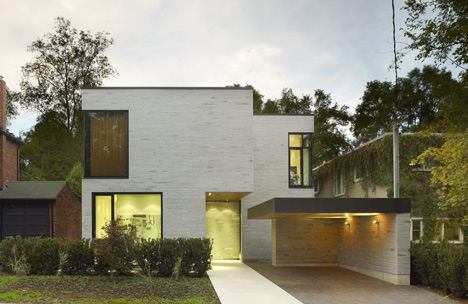
Drew Mandel Architects used locally quarried stone blocks in three different sizes to create irregular courses on the building's exterior. To contrast, zinc clads the cantilevered first floor and richly coloured walnut covers a selection of surfaces inside the house.
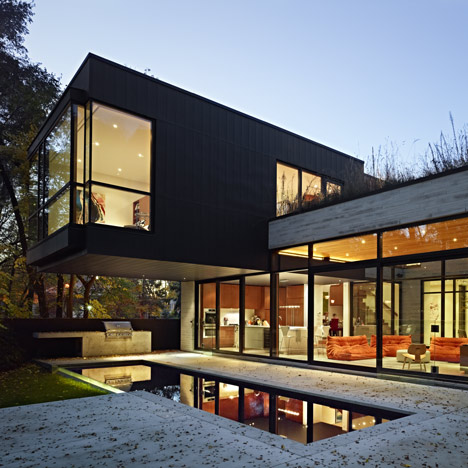
"The restrained and limited material palette avoids unnecessary ornamentation in order to focus one's attention on the site, natural light, and movement through modulated open spaces," say the architects.
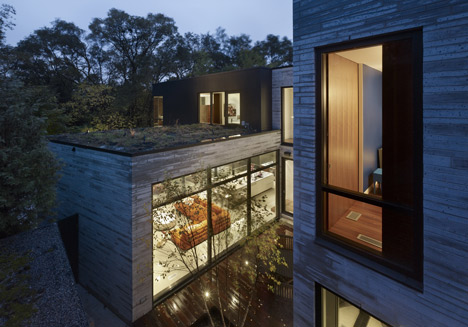
The volume of the house is broken down into modules, which step back and forth on both floors to create two patios at ground floor level and a vegetable garden on the roof.
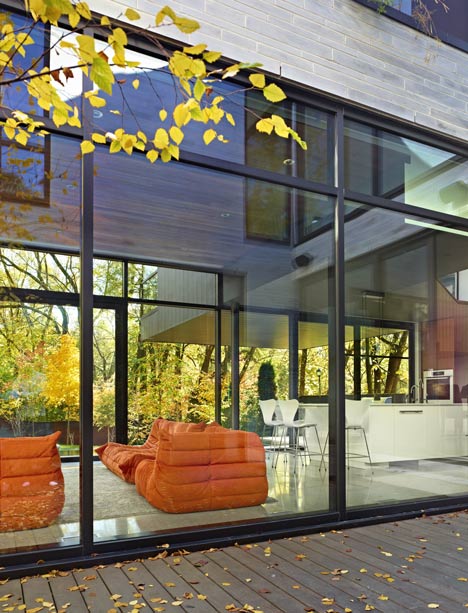
The architects explain this as a "pushing and pulling" that mediates between the residential context at the front and the woodland area at the rear. "The sculptural expression solves programmatic requirements, maximises views, provides natural light, and enhances the promenade and transition from suburban streetscape to very primal forms of nature," they add.
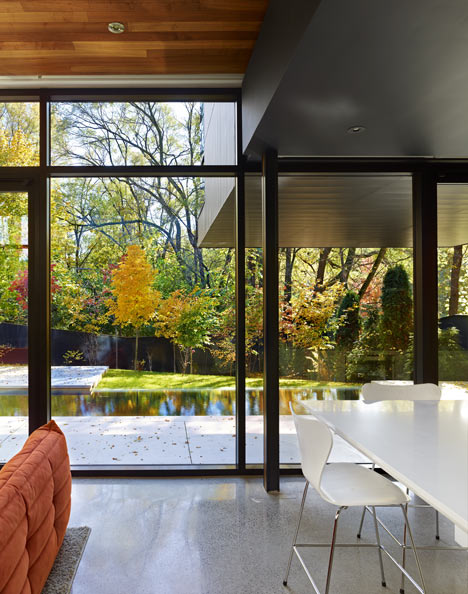
A glazed single-storey block at the back contains the living room and offers a view back towards the park.
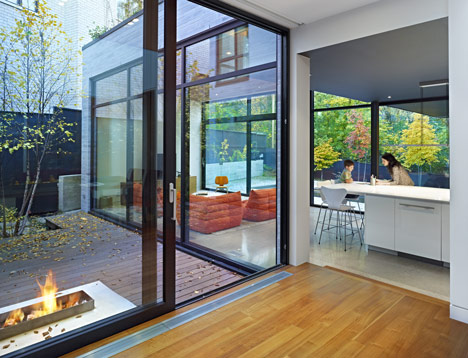
The overhanging first floor cantilevers out beside it and hovers above an outdoor swimming pool. To support the weight of the cantilever, the architects added a single concrete wall and a series of concealed trusses.
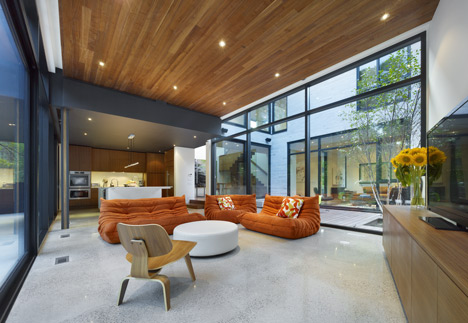
A double-height dining room is positioned at the centre of the house and splits the first floor into two wings. A mezzanine corridor runs between.
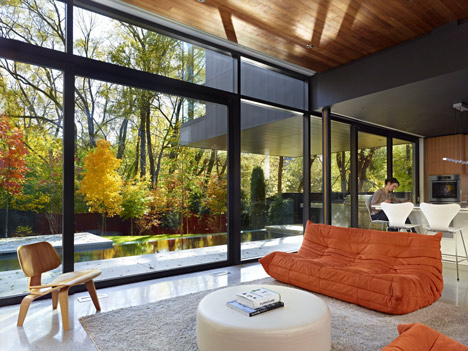
Other Canadian houses completed in recent years a house built with concrete bricks in Québec and a timber-clad house on a hillside.
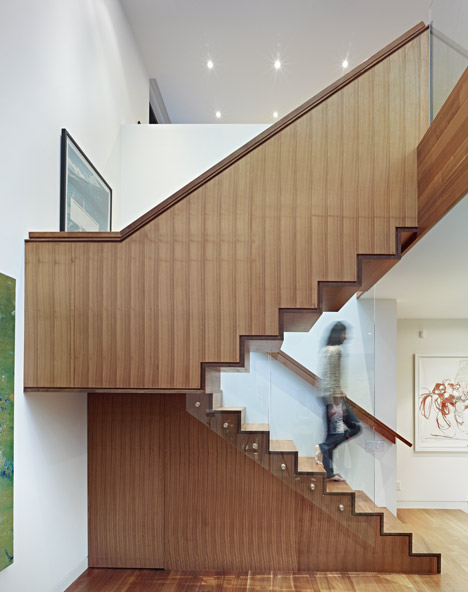
See more architecture in Canada »
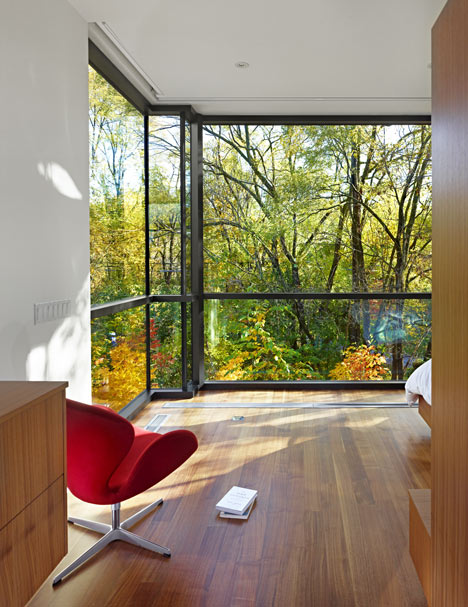
Here's some more information from Drew Mandel Architects:
Cedarvale Ravine House
Toronto, Canada
The Cedarvale Ravine House is a 3350 square feet home for a family of four that is located at the edge of the Toronto Cedarvale Ravine. The ravine system, the most distinctive feature of Toronto's geography, comprises of extraordinary arteries that flow through the city giving unique access to the wilderness. This infill house sits on a typical mid-town residential neighborhood street, but opens to protected woodlands at the rear of the property. The building mass is formed by pushing and pulling the desired volume across the site. It is further manipulated with void spaces. The sculptural expression solves programmatic requirements, maximises views, provides natural light, and enhances the promenade and transition from suburban streetscape to very primal forms of nature.
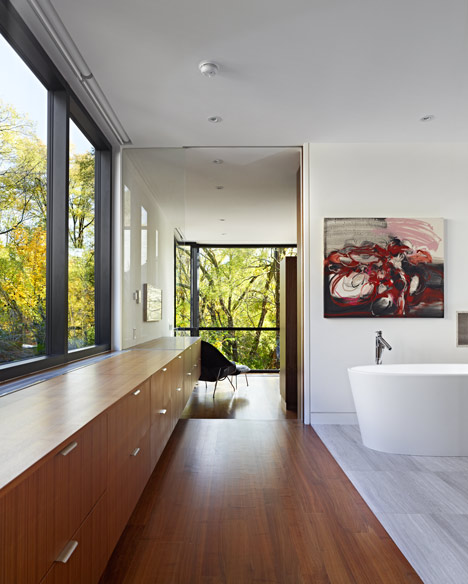
The circulation of the house weaves through a modulation of intimate and expansive spaces and courtyards that lead to a glass-enclosed single-storey space at the rear of the property. This is the kitchen and family room, the heart of the house. It also defines the south edge of the courtyard. This volume has been pushed down to one storey in order to permit light to the interior and views out to the ravine. Large expanses of glass dematerialise the monolithic stone building and dissolve boundaries between the interior and exterior.
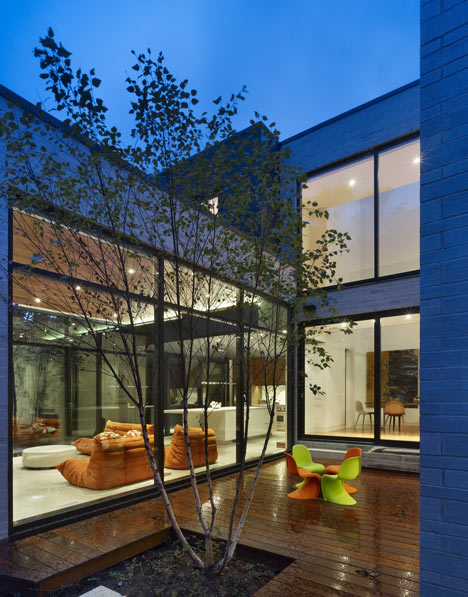
The building is clad in custom local Ontario stone masonry units. 2", 3" and 4" tall stone courses are laid in an irregular sequence. The random lengths of stone range from 1'-0" to 4'-0" and intend to emphasise the horizontal lines of the building.
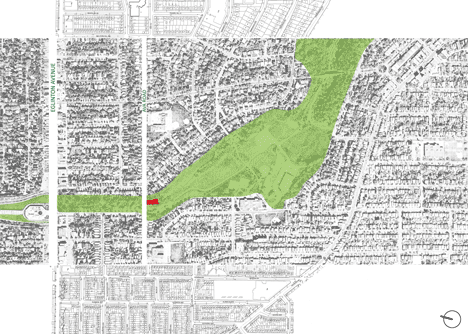
Above: site plan - click for larger image
At the second floor, a zinc-clad cantilevered superstructure frames views from the inside and gestures to the woodlands. It floats above and beyond the main stone volume and allows the re-naturalised ravine plantings to be brought farther into the site. A lap pool reflects light into the space under the second floor cantilever where a family can enjoy outdoor activities around the pool and barbeque.
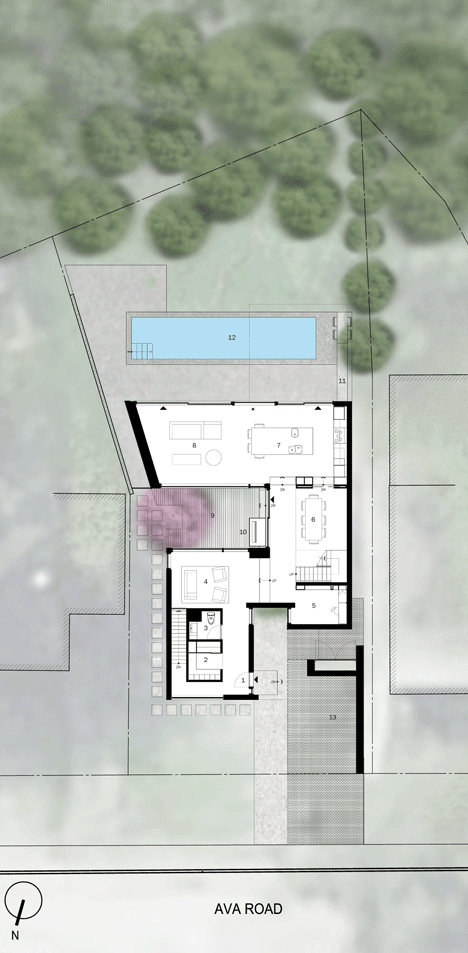
Above: ground floor plan
The reaching superstructure is the structural feature of the project. Its one storey high trusses are embedded in walls and are supported on an exposed slender column. Column supports are reduced by diffusing the overturning forces into both the roof and floor diaphragms. A series of space-defining vertical planes and a mass concrete wall are used for lateral resistance. The floating rear volume is complimented by a carport cantilever reaching to the front property line. Its structure is a three-point steel framing system with wood infill, sitting on cantilevered concrete walls.
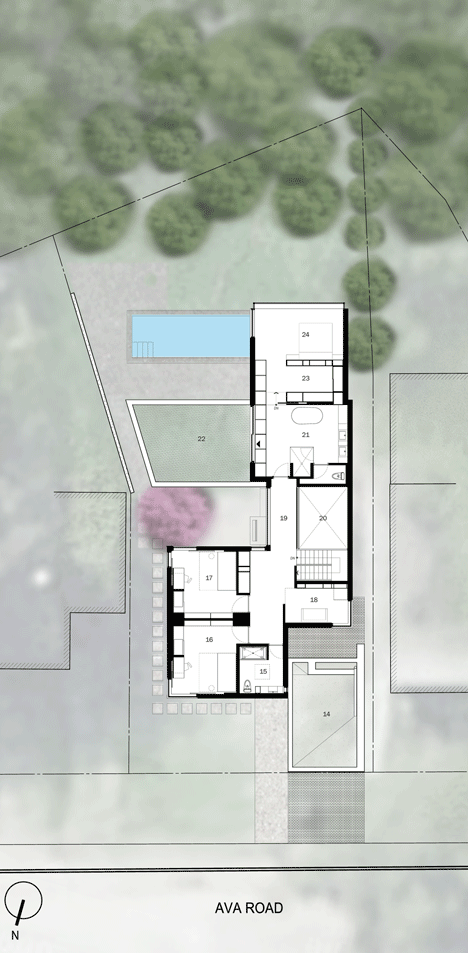
Above: first floor plan
The private areas located on the second floor feature operable floor-to-ceiling glazing with sliding interior wooden shutters. The system allows one to control sunlight, privacy, air flow, and noise as desired.

Above: long section one - click for larger image
The second floor diverges into two wings separated by a double height dining space and its adjacent open courtyard. This connection space is traversed by a bridge that leads to access to a green roof.

Above: long section two - click for larger image
It contains a vegetable garden for family meals, while insulating the one-storey family room-kitchen below. Both the courtyard and the green roof spaces support the local conservation authority's interest to have the rear of the property re-naturalised as part of a larger ravine stewardship program. With much of the rear planted, these green spaces provide additional amenity space and more complex and modulated volumes. The ravine is brought to the foreground at the second floor spaces.

Above: elevation - click for larger image
The restrained and limited material palette of stone, walnut, and concrete avoids unnecessary ornamentation in order to focus one's attention on the site, natural light, and movement through modulated open spaces. The Cedarvale Ravine House provides opportunities to celebrate the everyday rituals of residential life and enhances the slow unfolding experience of a special site.